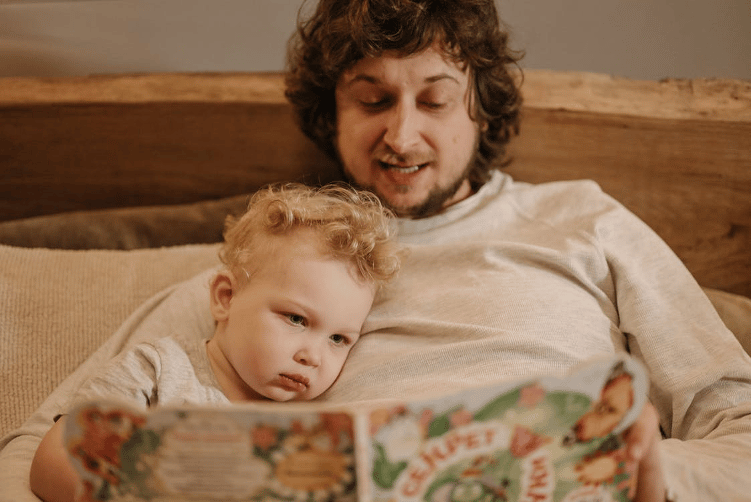What Age Should a Child Be Able to Read?
Certainly, it’s rare to see a baby reading. But by the time your Baby Einstein reaches first or second grade, should they be able to read?
Whether you’re a parent, educator, or just a curious reader, this question is both incredibly common and highly contested. Like any other developmental skill, reading is a process: one that can vary dramatically based on a student’s environment, personal interests, and their reading curriculum.
After months of virtual reading instruction, the expected timeframe to reach reading fluency has changed significantly. Whether your 1st grader is struggling to read or your high schooler chooses TikTok over books, just remember: you’re not alone in the struggle!
Today, we’re addressing one of the biggest FAQs in the science of reading - and dispelling some common myths stirred up by this debate.

When Do Kids Learn to Read?
According to U.S. News, reading experts say that most children learn to read by age 6 or 7, when they’re typically in first or second grade.
While this is an average, there is no “normal” age for learning how to read. As with any developmental milestone, rates of reading progress will vary: some parents report that their children are reading competently at age 3, while other readers don’t achieve full fluency (and confidence!) until age 12 or 13.
The main takeaway? Regardless of when students learn how to read, the’re most likely to succeed when they have access to high-quality literacy instruction with an emphasis on phonemic awareness and decoding. In particular, past studies have illuminated phonemic awareness as the key differentiator between good readers and “late bloomers.”

Without early reading intervention, researchers found that average and below-average readers developed significant skill deficits that perpetuated reading gaps, even through high school.
Reading Milestones by Grade
If you’re trying to determine where your student falls along the path to reading fluency, experts suggest the following reading milestones:
Toddlers:
Most toddlers are emergent readers. They may not know how to read, but many look forward to Story Time. If you’re the parent of a toddler (or any emergent reader), you’ve probably committed their favorite book to memory. Many toddlers also write in scribbles: if anything, they understand that reading and writing are powerful tools of communication.
Preschoolers:
Similar to toddlers, most preschoolers are still in the emergent stage of reading! Preschoolers may also learn the alphabet song and even recognize the first letter of their name. You might see them pretending to read and/or pointing out high-frequency words in everyday life, like “STOP” on a stop sign.
Kindergartners:
When kids hit kindergarten, it’s usually time to zoom in on the foundations of reading. Not every child has regular opportunities to read at home, so it’s important for educators to teach the basic structure of a book: the front, back, title, author, and the sentences that make up a story! Many kindergartners also learn about rhyming, one-syllable words, and sight words.
First and Second Graders:
Many first and second graders are still developing readers. They’re solidifying the basics of reading: the alphabet, decoding, phonics, and sight words, all of which are essential for long-term reading fluency.
Third Grade and Beyond:
Realistically, many older elementary students are still developing their reading skills! By third grade, they’re often transitioning to longer books. Even as the texts become more complicated, they’ll persevere with their decoding skills. Eventually, picture books will be in the rear-view mirror, and they’ll advance to both reading and writing in paragraphs.
How To Support a Struggling First Grader
Parents may begin to notice early literacy issues in first grade, when learning to read is often a main focus in the classroom.
While most kids won’t achieve full reading competency until they’re in elementary school, starting their reading journey early is often beneficial. Here are some simple-yet-powerful tips to support a first grader who’s struggling to read:
Read aloud - and together.
The power of simply reading words aloud should not be overlooked. Reading aloud is helpful for first graders who are just grasping their phonemes, as well as older readers who may want to practice new vocabulary words in the presence of a supportive adult.
Play!
Get playful! Hands-on, creative reading lessons are the best for struggling readers and kinesthetic learners. Incorporate word maps, phoneme poppers, and any other lesson format that gets your reader thinking and moving.
An important disclaimer: these tips aren’t exclusively for first graders! There’s no cut-off for learning how to read. As schools continue to recover from learning loss, a combination of phonics, playfulness, and patience is needed to help students to reach - and then surpass - their next reading milestone.

Take-Aways:
- While there’s no “normal” age for a student to learn how to read, many U.S. classrooms teach the foundations of reading in first and second grade, when students are typically 6 or 7 years old.
- Most literacy experts agree on general reading milestones based on grade; but these vary depending on the reading curriculum and students’ unique skills, needs, and experiences.
- As classrooms recover from the pandemic, supportive adults are encouraged to adopt a playful, patient approach with any young reader - regardless of the student’s age!
Start Teaching Reading for Free Now!
Access Level 1’s four interactive stories and the accompanying supplemental resources to teach elementary students how to read. No credit card is needed. Join the 42,635 teachers and students using our reading program.
